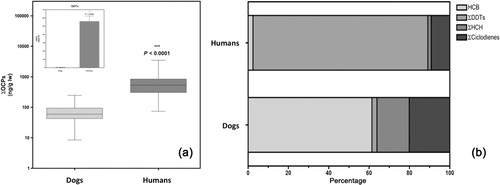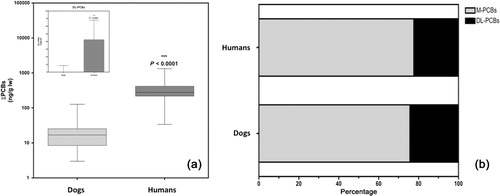Figures & data
Table 1. Individual PAHs, PAH metabolites, ∑PAH7 and ∑PAH21 concentrations (ng/g lw) in dog (n = 87) and human (n = 100) plasma samples from the Canary Islands, Spain.


Table 2. OCP concentrations (ng/g lw) in dog (n = 87) and human (n = 100) plasma samples from the Canary Islands, Spain.

